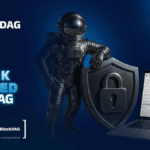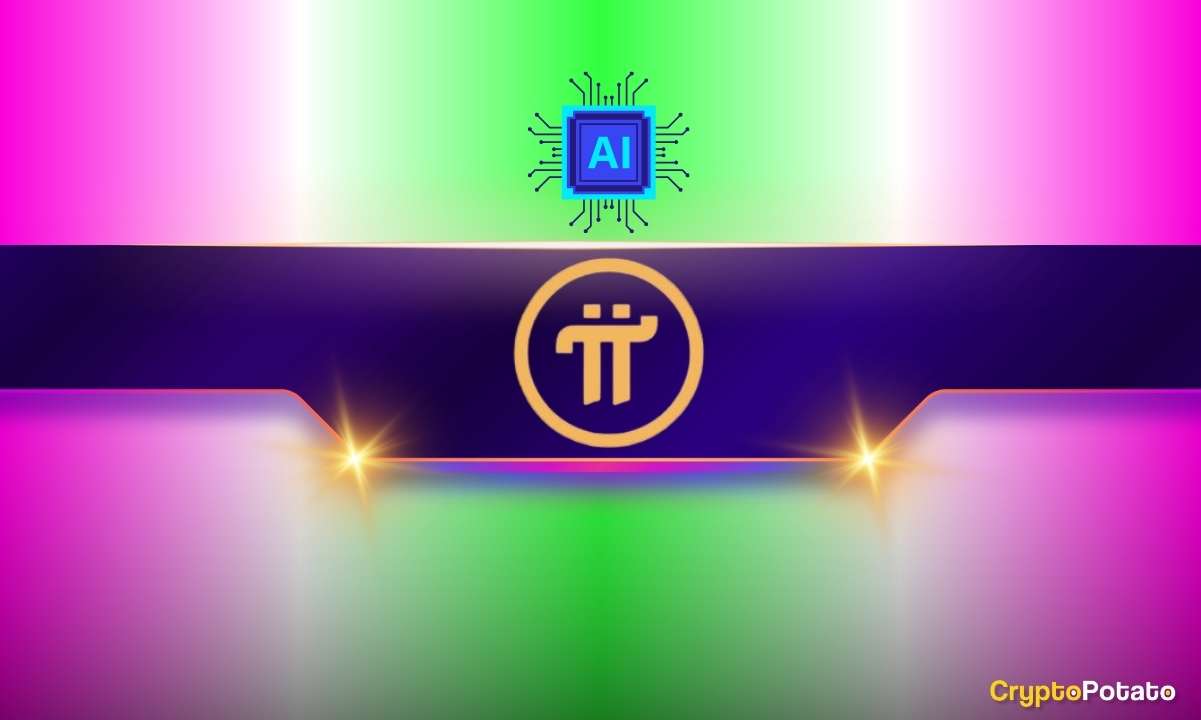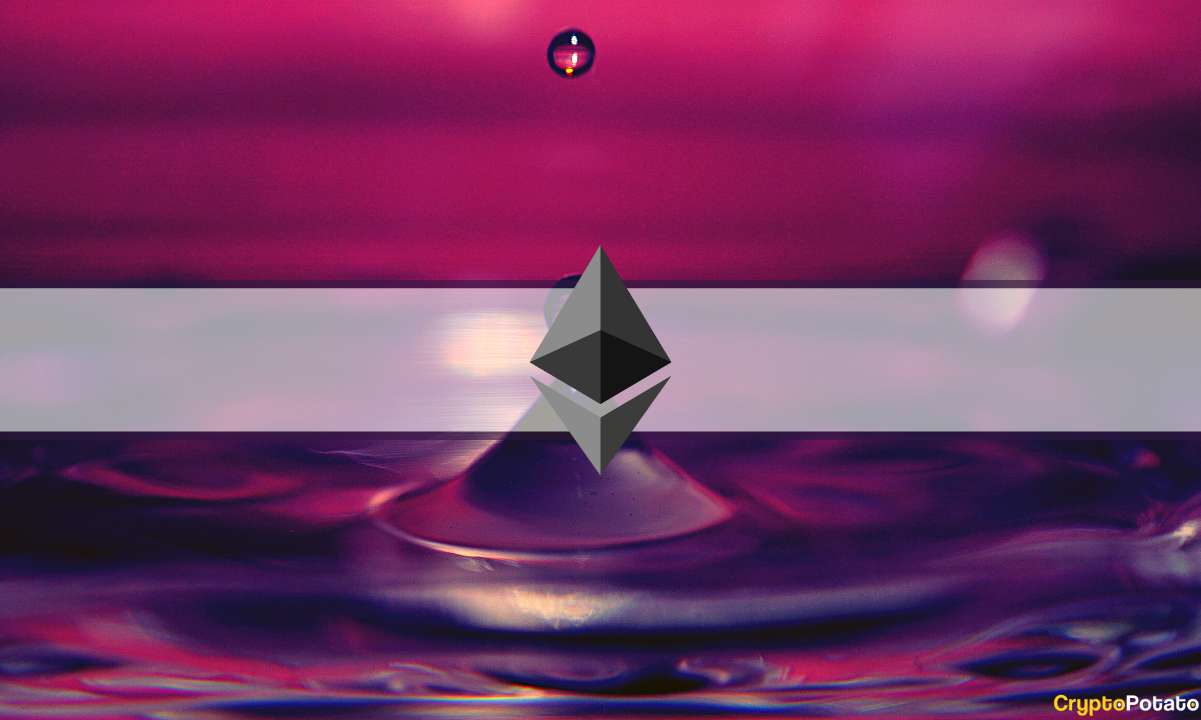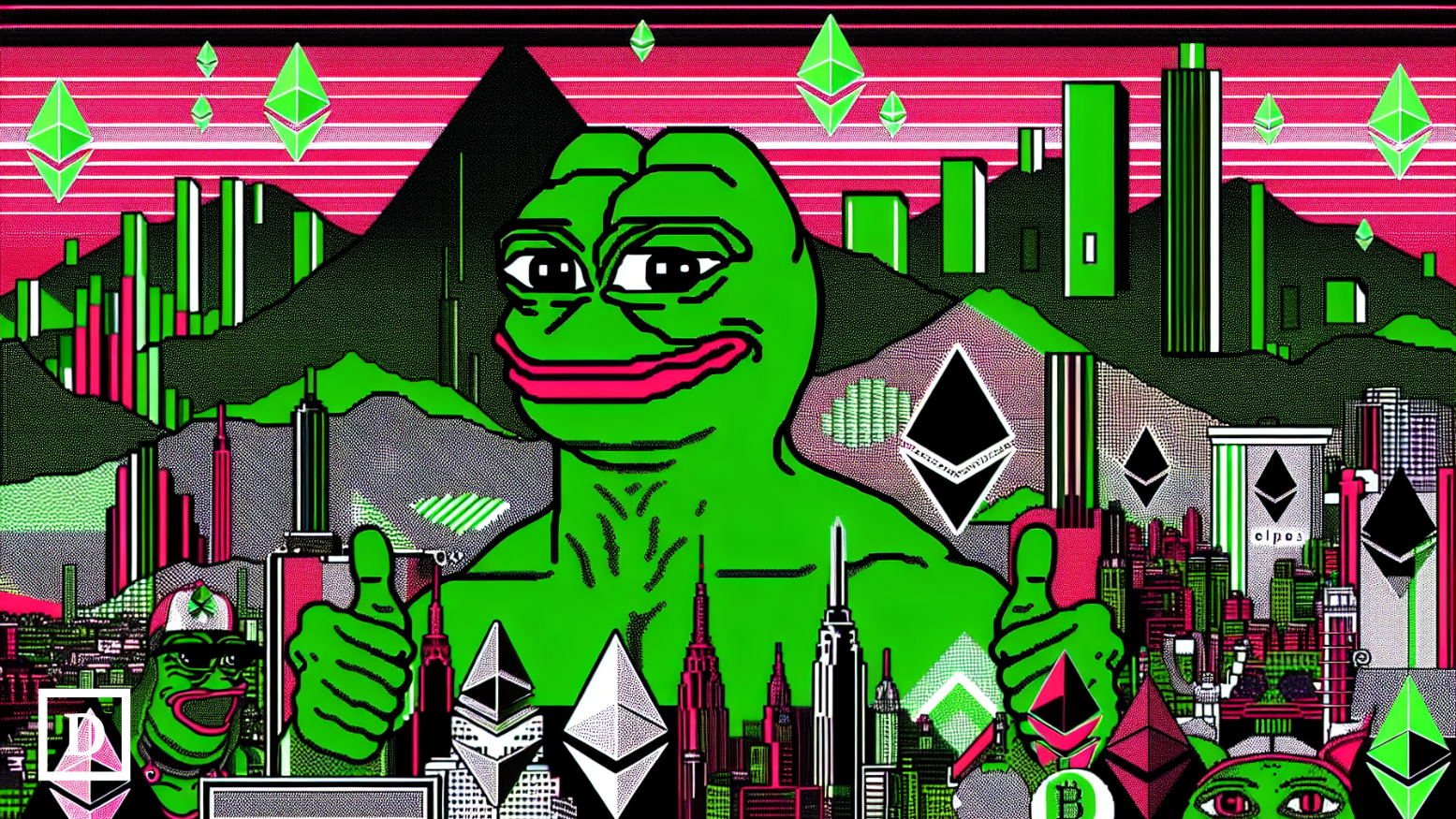TestnetLive Feed
Testnet breaking news and instant alerts. Crypto Feed's minimalist interface delivers verified headlines, price movements, and protocol updates the moment they happen. Fast, focused, no fluff.
 Turner Claims Coordinated Attack on BlockDAG as Community Rallies in Support
Turner Claims Coordinated Attack on BlockDAG as Community Rallies in SupportBlockDAG’s $433 million presale has become the target of what CEO Antony Turner has characterized as a coordinated disinformation campaign orchestrated by rival blockchain projects, with the timing of recent allegations raising serious questions about competitive sabotage in the cryptocurrency industry. In a comprehensive address to the community yesterday, Turner directly confronted fraud allegations made by blockchain investigator ZachXBT, presenting a detailed rebuttal that has resonated strongly with BlockDAG‘s 312,000 holders. Rather than triggering panic, the accusations appear to have strengthened community resolve, with social media channels showing increased activity and vocal support for the project’s leadership. The Company Claims Suspicious Timing of Allegations ZachXBT’s accusations emerged on social media, claiming that Turner is merely a figurehead while undisclosed parties allegedly control BlockDAG’s operations and funnel presale funds through offshore channels. The investigator provided screenshots and cited corporate documents, but notably failed to produce the blockchain forensic evidence. The timing has become a central point of contention. With BlockDAG having confirmed a specific exchange listing date of February 10th, 2026, just months away, the allegations arrive precisely when maximum damage could be inflicted on the project’s launch momentum. Turner pointed to this timing as evidence of strategic interference rather than organic whistleblowing. The cryptocurrency industry has a well-documented history of such tactics, with competing projects deploying FUD campaigns to undermine rivals at critical junctures. BlockDAG’s success could represent a significant competitive threat in the Layer-1 blockchain space, particularly given its hybrid DAG-PoW architecture, promising 15,000 transactions per second – specifications that directly challenge established protocols with billions in market capitalization. Turner’s Verifiable Professional Background Central to Turner’s rebuttal was a methodical presentation of his extensive professional credentials, documentation that the community has since independently verified through public records. His role as Chief Operating Officer at Spirit Blockchain Capital Inc., a publicly traded company on the Canadian Securities Exchange, is confirmed through official CSE filings accessible to any investor conducting due diligence. Prior to BlockDAG, Turner co-founded SwissOne Capital AG in Switzerland, where he developed one of the country’s first regulated crypto index funds. This venture required navigating Switzerland’s rigorous financial regulatory environment and establishing KYC-compliant investor onboarding procedures. Turner’s LinkedIn profile, corporate documents from Spirit Blockchain, and archived materials from SwissOne Capital all corroborate a consistent narrative of a fintech professional with over 30 years of experience across digital industries. BlockDAG Rebuts the Allegations BlockDAG quickly answered ZachXBT’s allegations, calling for “the glaring absence of concrete evidence.” They added that, for an investigator whose reputation rests on meticulous on-chain analysis, tracking wallets, following transaction flows, and presenting irrefutable blockchain data, this case represents a significant departure. In its response, BlockDAG explained that the accusations rely primarily on circumstantial observations about corporate structure and unverified claims about offshore activities. While ZachXBT cited “offshore entity documents” in his allegations, he has not made them publicly available for independent verification. At the time of writing, the public is still in the dark on the exact wallet addresses, transaction analysis sheets, or on-chain data evidence. February 10th: A Concrete Accountability Mechanism Turner’s confirmation that BlockDAG will list on major cryptocurrency exchanges on February 10th, 2026 – in the eyes of investors – represents a critical accountability mechanism that fraudulent projects typically avoid. The specificity of this commitment contrasts with the often-vague timelines and perpetual delays that characterize exit scams. By staking BlockDAG’s entire reputation on delivering functional infrastructure and exchange listings by a specific date, Turner has created a binary outcome that will definitively resolve the controversy. Either BlockDAG delivers everything promised on February 10th, or it doesn’t. There is no middle ground, no room for excuses, and no way to postpone accountability perpetually. This level of commitment suggests either remarkable confidence in the project’s readiness or would represent an unusually reckless move for a fraudulent operation. Technical Achievements Support Legitimacy Claims Beyond leadership credentials, BlockDAG has demonstrated verifiable technical achievements that lend legitimacy to its operations. The Awakening Testnet is live and publicly accessible, processing over 1400 transactions per second with full Ethereum Virtual Machine compatibility. Over 4,500 developers are reportedly building decentralized applications on the network, an activity that can be independently verified. The project has also undergone security audits by both Halborn and CertiK, major firms that conduct extensive due diligence before associating with blockchain projects. BlockDAG’s partnership with the BWT Alpine Formula 1 Team provides additional institutional validation, as such partnerships require rigorous vetting processes. These technical milestones and institutional relationships could serve as tangible evidence of a functioning project with real infrastructure. Turner Calls the Allegations a Coordinated Disinformation Effort According to Turner, the allegations align with what he describes as a “familiar disinformation playbook” often seen in competitive crypto environments. He claims that rival projects sometimes wait for a major milestone before launching coordinated social media campaigns designed to stir panic among retail investors, amplify negative narratives, and undermine confidence ahead of a key launch. Turner suggests that the aim of such tactics is rarely to prove wrongdoing, but rather to create enough uncertainty to slow momentum and weaken investor sentiment. While he declined to name specific competitors, Turner indicated that BlockDAG’s internal review has identified signs pointing toward rival blockchain initiatives. Community Response Validates Leadership The BlockDAG community’s response to the controversy has been telling. Rather than panic and fragmentation, the typical reaction to serious fraud allegations, the community has demonstrated remarkable solidarity. Telegram and Discord channels have experienced surges in activity, with holders expressing increased confidence following Turner’s detailed rebuttal. The community’s decision to stand behind the project reflects their assessment that Turner’s verifiable credentials, BlockDAG’s technical achievements, and the specific February 10th commitment provide more compelling evidence than unsubstantiated social media allegations lacking blockchain forensics. Accountability Through Delivery The coming months will provide a definitive resolution to this controversy. February 10th, 2026, represents a concrete accountability deadline that will either vindicate BlockDAG’s legitimacy or validate the skeptics’ concerns. Unlike projects that can perpetually delay and obfuscate, BlockDAG has committed to a specific date with specific deliverables. For the 312,000 holders who have invested $433 million in the project, Turner’s comprehensive rebuttal, backed by verifiable credentials and technical achievements, appears to have provided the assurance needed to weather what many now view as a competitive attack campaign timed to disrupt BlockDAG’s ascent in the increasingly contested Layer-1 blockchain landscape. The post Turner Claims Coordinated Attack on BlockDAG as Community Rallies in Support appeared first on 99Bitcoins.
 Pi Network (PI) Takes Its First Step Into the World of AI: Details Inside
Pi Network (PI) Takes Its First Step Into the World of AI: Details InsideThe controversial crypto project Pi Network collaborated with an AI-focused company that allows robots and intelligent systems to interact with their environments and with each other. The three main objectives of the partnership will be to increase the utility of PI, enable more of the world’s production to run on Pi Network, and bring the asset into real-world use cases. The token’s price has surged by double digits in the past week following some other notable developments. Jumping Into the AI Trend Pi Network Ventures, an entity within Pi Network’s ecosystem that invests in startups and businesses across multiple industries, made its first investment in OpenMind. The latter is a company developing an operating system for robots “to think, learn, and work together – like Android for robots.” According to Pi Network’s team, this collaboration aligns with the project’s vision for the future of blockchain technology and Artificial Intelligence, where “decentralized infrastructure supports open innovation and equitable participation.” In addition to the investment, the two entities have shaken hands on a completed proof-of-concept project where volunteer Pi Node operators run image recognition AI models for OpenMind. “This early experiment, where OpenMind’s AI models can run on Pi Node infrastructure, explores the capability of Pi’s global network of nodes to support decentralized AI training and computing tasks – another Pi Node utility in addition to securing the Pi Ledger. This is also a platform-level utility, relying on the collective resources of the network, i.e., computation power of its over 350,000 active nodes,” the disclosure reads. Pi Network’s team recognizes the technological advancements in the AI world, hoping that engagement with that niche could be beneficial for its native cryptocurrency and the entire ecosystem. PI Price Outlook The news of the collaboration seems to have caused only minor volatility for PI. As of this writing, it trades around $0.25, down 4% over the past 24 hours. The decline aligns with the broader retreat of the crypto sector following the Fed’s expected decision to lower interest rates in the United States by 0.25%. X user Marzell argued that the event was already priced in, leading to a classic “buy the rumor, sell the news” scenario. “That means many traders bought PI in anticipation. Once the decision is confirmed, profit-taking could trigger a sharp pullback,” he claimed. In his view, the overbought technical signals and the remaining core structural issues may also have contributed to PI’s pullback over the past day. However, the token is among the top-performing cryptocurrencies on a weekly scale, registering a 27% pump. Some of the elements fueling the comeback within that timeframe include renewed rumors that Pi Network has joined the ISO 20022 race and the official activation of the Testnet2 v23. PI Price, Source: CoinGecko The post Pi Network (PI) Takes Its First Step Into the World of AI: Details Inside appeared first on CryptoPotato.
 Ethereum’s Fusaka Upgrade Hits Final Testnet – Mainnet Launch Locked for December 3
Ethereum’s Fusaka Upgrade Hits Final Testnet – Mainnet Launch Locked for December 3Ethereum’s much-anticipated Fusaka hard fork reached a major milestone on Tuesday with a successful deployment on the Hoodi testnet – its final testing phase before mainnet activation later this year. The test, which went live around 18:53 UTC, was the completion of Ethereum’s three-stage simulation process following earlier activations on the Holesky and Sepolia testnets. Fusaka Upgrade According to the Ethereum Foundation, Fusaka’s mainnet rollout is expected at least 30 days after Hoodi’s activation, while developers tentatively target December 3. The main objective behind the upgrade is to strengthen Ethereum’s scalability, security, and cost efficiency, building on the groundwork laid by April’s Pectra upgrade. Fusaka introduces a series of technical improvements spanning more than a dozen Ethereum Improvement Proposals (EIPs). Leading the list is the EIP-7594, or Peer Data Availability Sampling (PeerDAS), which enables validators to verify only portions of data, rather than entire “blobs,” and significantly reduces bandwidth demands and operational costs for validators and Layer 2 networks. Other proposals, such as EIPs 7825 and 7935, will adjust gas limits to improve efficiency and prepare the network for parallel execution, while EIPs 7939 and 7951 boost performance and zero-knowledge proving support. These upgrades are designed to lower transaction costs for users and developers while setting the stage for the next phase of rollup scaling. Ethereum client teams confirmed smooth progress following Hoodi’s activation. Nethermind stated “The Ethereum 𝗛𝗼𝗼𝗱𝗶 𝗙𝗼𝗿𝗸 has been successfully completed and is now running seamlessly on the 𝗡𝗲𝘁𝗵𝗲𝗿𝗺𝗶𝗻𝗱 𝗖𝗹𝗶𝗲𝗻𝘁. Another smooth upgrade, another key milestone on the road to Fusaka. Big thanks to everyone in the ecosystem who helped make it happen – from client teams to researchers and operators.” Road Ahead Consensys also said that Fusaka “paves the way for parallel execution” and lays the foundation for future network advancements. The rollout will proceed in phases. Following the mainnet launch scheduled for December 3, blob capacity increase is expected to be on December 17, while a second hard fork to expand blob capacity further is slated for January 7, 2026. Ethereum developers have already turned their focus to the next upgrade, dubbed “Glamsterdam,” which is expected to introduce faster block times and further scalability enhancements. Glamsterdam falls under the “Surge” stage of the network’s roadmap. Meanwhile, ETH’s price remained fairly unfazed by the technical development. The altcoin recorded a fresh decline of almost 3% over the past 24 hours and is currently trading below $4,000. The post Ethereum’s Fusaka Upgrade Hits Final Testnet – Mainnet Launch Locked for December 3 appeared first on CryptoPotato.
 FED Decision Today! Monad 3 Day Airdrop! Western Union Stablecoin on SOL!
FED Decision Today! Monad 3 Day Airdrop! Western Union Stablecoin on SOL!BTC: 112.9k (-1%) | BTC.D: 60% (+0.3%). ETH: 4000 (-3%) | BNB: 1116 (-1%) | SOL: 194 (-4%). Top Gainers: PI, TRUMP, M, PAXG, ZEC. BTC ETFs: +$202m | ETH ETFs: +$246m. Crypto falls ahead of Fed decision, stocks strong. France considers accumulating 2% of BTC supply. Huge volumes on day 1 of SOL ETF. ICO participant moves $6m ETH after 8 years. Hype and BNB dominate weekly L1 fees. Sharplink to stake $200m ETH on Linea. ETH Fusaka upgrade now on final testnet. Evernorth has accumulated $1b XRP. Western Union stablecoin planned on SOL. Securitize to go public via $1.25b SPAC deal. Circle starts testing Arc Blockchain. Visa adds support for four stablecoins.
 Ethereum Foundation Announces Gas Limit Cap for Upcoming Fusaka Upgrade
Ethereum Foundation Announces Gas Limit Cap for Upcoming Fusaka UpgradeThe Ethereum Foundation (EF) has announced a change to the upcoming Fusaka hard fork that will introduce a per-transaction gas limit cap.The EF unveiled the change via its blog today, with the update, also known as EIP-7825, already live on the Holesky and Sepolia testnet networks. EIP-7825 is expected to launch on the Ethereum mainnet when Fusaka goes live in December.Currently, a single transaction can fill an entire block's 45 million gas limit, which could inhibit parallel execution and open the door to Denial of Service (DOS) attacks. The change will set a per-transaction gas limit of 16.78 million to mitigate potential issues.To continue reading this as well as other DeFi and Web3 news, visit us at thedefiant.io
